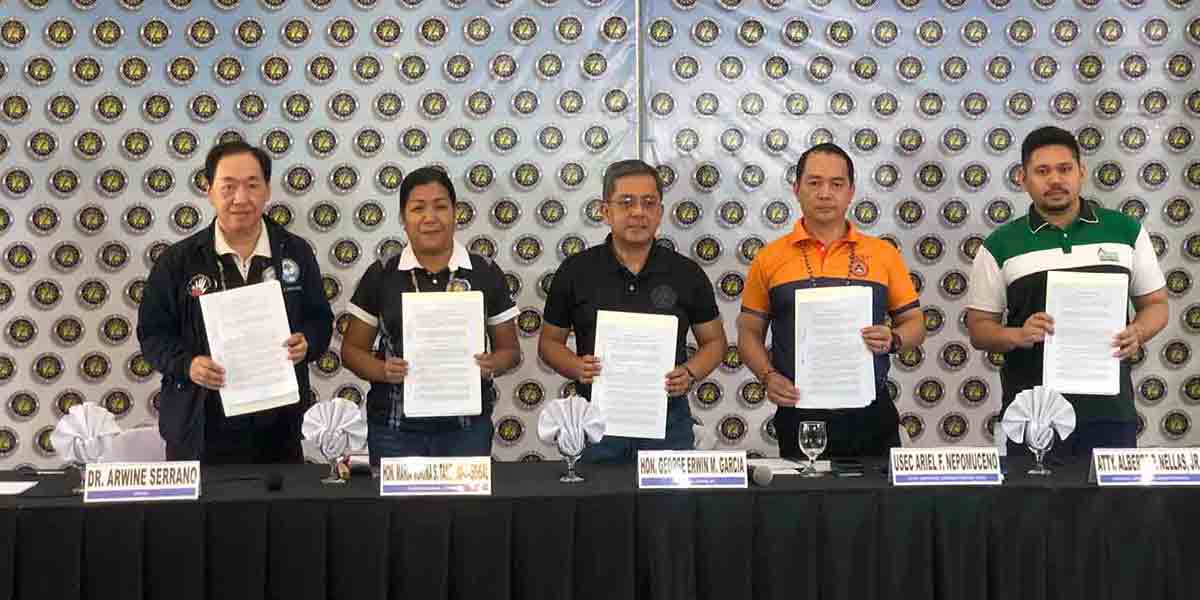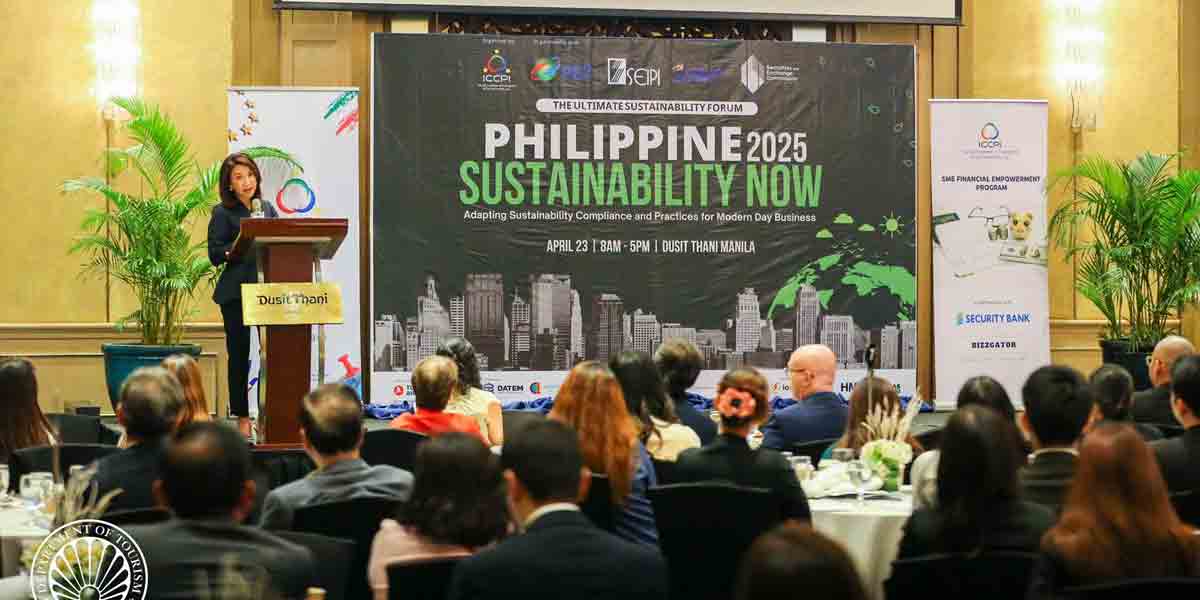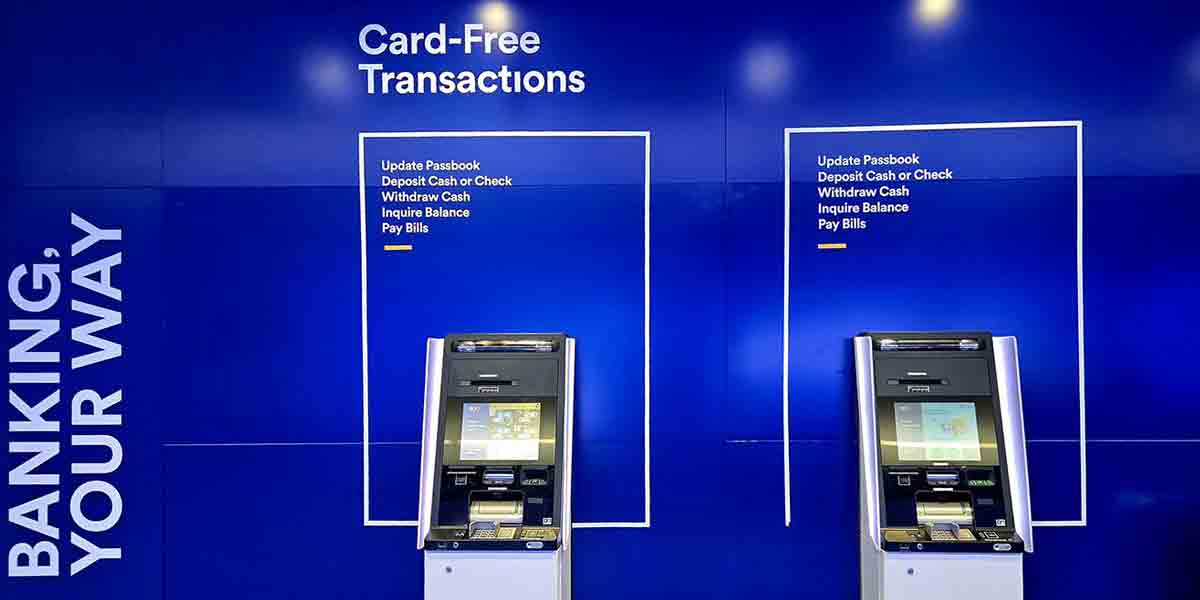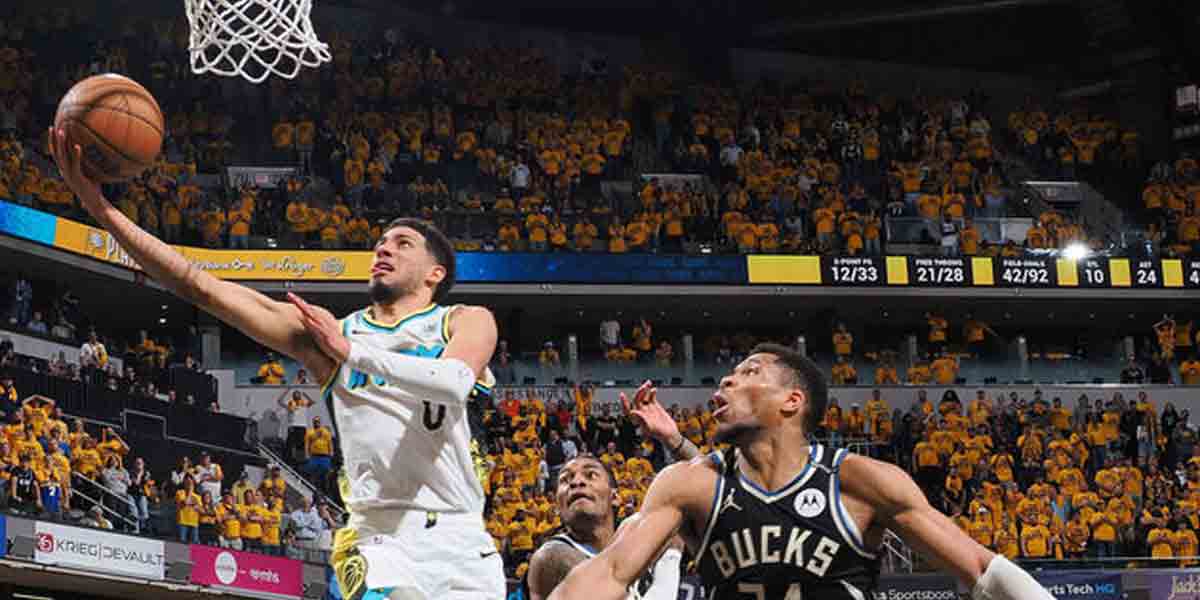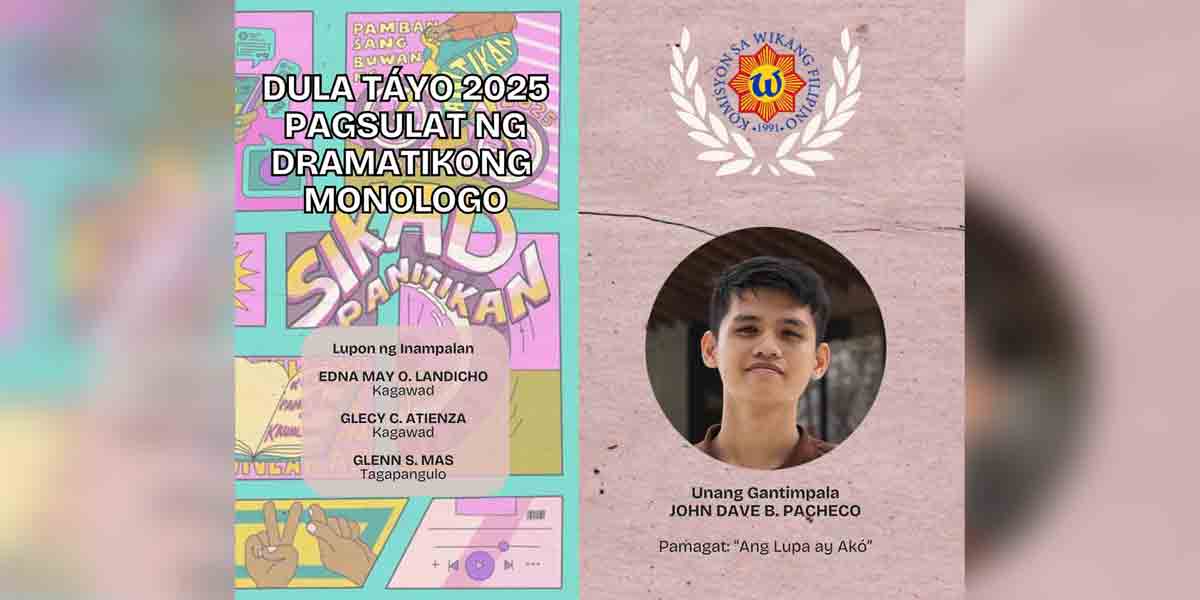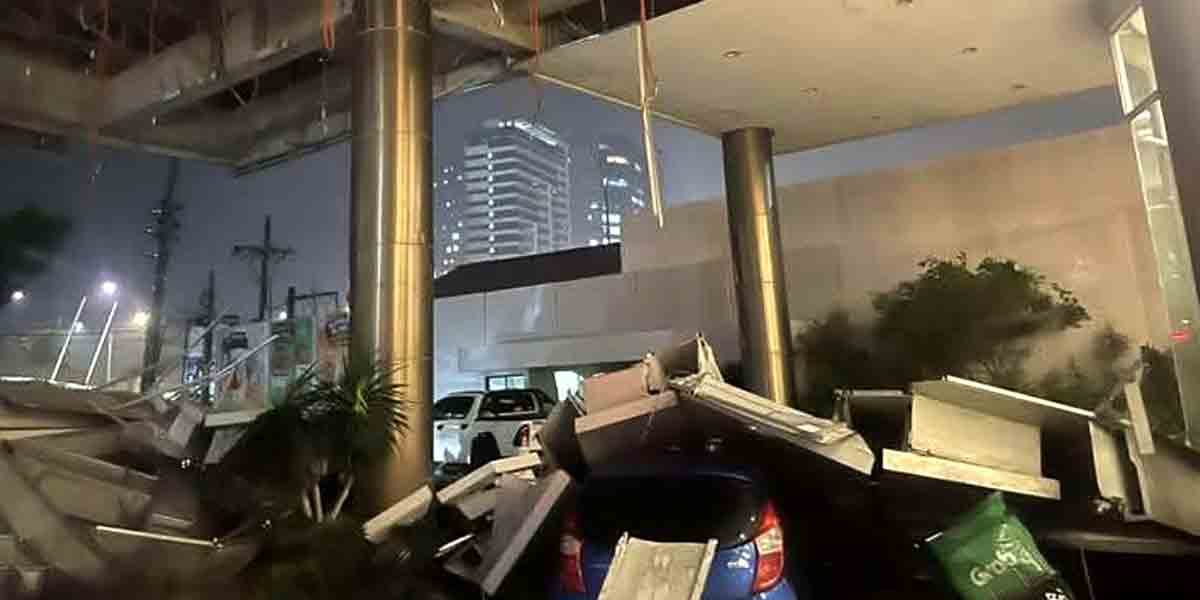
By Joseph B.A. Marzan and Rjay Z. Castor
It’s a hot and humid night at the B Lifestyle Complex in Iloilo City’s Mandurriao district, known as a hangout place for many on weekend nights, and a nascent home to one of the city’s novel attractions–drag shows.
But this drag show in particular, last April 22, was set special as it featured guest “drag queen” Aries Night from the online competition series, Drag Den, as well as the show’s director, Rod Singh.
This is also the first drag show to charge for tickets, with proceeds going to Angat Buhay, the non-government organization helmed by former Vice President Leni Robredo.
Drag queens from Iloilo and Negros Occidental wow the packed crowd with their prepared setlist, a display of talents in dancing, lip-syincing, and acting, all rolled into organized concepts, but with the ante upped and infused with the concept of campiness.
They all joined Aries Night in the finale lipsync performance of “Wings”, the 2012 hit song by British girl group Little Mix, adorned with bejeweled or shiny costumes, mid-level to high heels, and a heavy amount of makeup.
A 2016 study by Leila Rupp and Verta Taylor of the University of California, published in The Blackwell Encyclopedia of Sociology, describes drag queens traditionally as gay men who crossdress and lip-synch in gay or tourist venues.
They have been, at times, described as female impersonators, but as another study of Rupp and Taylor in 2003 pointed out, that is not the case.
There have been multiple studies on drag entertainment, dating as early as 1972, and most of these have been aimed at drag queens, with the concept of “drag kings” arising only at the turn of the 20th century.
Drag entertainment shows, while they aren’t new to Iloilo, have only been more emergent since this building started what can be considered the city’s first fully-organized drag show in January, as part of its celebration of the 2023 Dinagyang Festival.
But what does it take underneath the costumes, the makeup, and the performances? Daily Guardian spoke to four of the performing queens and took a look at their lives under and behind the lights.
DRIVING FORCE
‘Jeyana’ kicked off the show by lip-syncing to American singer Beyoncé’s 2013 Super Bowl Half-Time Show performance, complete with the choreography as if it were the real show itself.
She happily engages the crowd through the 13-minute setlist, which contains some of the singer’s biggest hits, including ‘Love On Top’, ‘Crazy In Love’, ‘End of Time’, ‘Baby Boy’, ‘Single Ladies (Put A Ring On It)’, and ‘Halo’, and those with the girl group Destiny’s Child, such as ‘Bootylicious’ and ‘Independent Women Part I’.
She made her ‘drag debut’ at a competition in November 2022 held at a business park in the thriving Mandurriao district.
The person behind ‘Jeyana’, 21-year-old John Rey Sanchez, credits her performances to his extensive background in dancing.
This is coupled by his influences, including American drag queens such as RuPaul and Brooke Lynn Hytes, Ilonggo veteran drag performer Maki Gu, whom he credits for his debut, and some of the RuPaul’s Drag Race (RPDR) background dancers.
“I was actually a well-trained dancer and performer, and I know the turnarounds of the performing arts and all. RuPaul’s Drag Race introduced me to a platform which I badly want to engage myself in,” Sanchez told Daily Guardian.
“I remembered watching an episode in Season 6, and after that, there came the opportunity last year, the Drag Ball, which celebrated the aspects of drag, and there came the birth of Jeyana,” he narrated.
Her drag name is a combination of nickname ‘Jey’ from his first name John Rey and from female name ‘Ana’, but he suggested that this name choice may change over time.
“I want to have a persona in drag [performances] that is much closer to [who] I am as a real homosexual. ‘Jeyana’ came from ‘Jey’, from ‘John’, of course, and I just wanted to have a feminine part of it, that’s why I put ‘-ana’. But I’m considering rebranding myself as I discover myself during the process of performing drag shows well in the future,” he explained.
He is well-supported by his parents, who watch his performances as Jeyana, although not initially, and by his boyfriend, Brian Cinco, who does his make up and also designs her stage outfits.
“Generally, [my life] is very different than what Jeyana’s lifestyle is now. I’m an openly gay child in the family, and I’m very happy that my parents are very supportive of what [both] John Rey and Jeyana [do], but mostly what I experience is [that] they really do love what Jeyana has to offer on the table,” he said.
“[My parents] were initially surprised when I introduced them first to [the concept of] drag, and I remember what they said, non-verbatim, ‘What are you going to do? Join Ms. Gay [pageants]?’ They had this notion that drag was associated with doing gay pageants, but as time [went] by, I introduced them to what drag actually was, and they saw in person what I do, and now they love it and are [now] very supportive,” he narrated further.
But even as he’s been able to integrate his life with “her”, putting on a good-quality drag performance has its costs, something that his partner was able to help him mitigate.
The only things he noted that he spent much on for her performances include body suits which range between ₱400 to ₱500, and a pair of red boots worth ₱3,000.
Sanchez says that his drag persona is also influenced by his current studies as a Psychology student at the Iloilo Doctors’ College, even being able to pay for his own tuition fee from earnings in performances.
He views his performances as ‘Jeyana’ as the ultimate driving force for his dreams and goals in life.
“I think drag queens can also know and feel that whatever it is they’re doing in [their] real lives affects what they’re doing in drag, because drag is not only just a platform where we can showcase what we can do, it’s also a platform where we can express our true meaning, our true purpose,” he said.
“In terms of my education, I think of [drag] as my driving force to study hard because as of the moment, drag performances or shows is my bread and butter, and I’m very thankful that our bookings and shows at B Complex come one after another because I’m already paying for my tuition fees, somehow, as well as my everyday expenses,” he added.
He stated further that the lack of understanding on the concept of drag and drag performances are what also push him and other performers to continue.
“There are some who actually fully don’t understand the concept of drag, and that’s exactly why we do this a lot of times, because we want the people to understand that this is not just a platform to perform but also to express our aesthetics, our views, our opinions and perspectives,” he said.
ACROSS THE POND
Joining Jeyana for her second set, a performance of American artists Doja Cat and SZA, is Moi, a drag queen from Bago City in Negros Occidental, all the way from across the Gulf of Panay.
Their lipsync was specifically sourced from the two artists’ performance of the song ‘Kiss Me More’ from the 2021 Billboard Music Awards, with Jeyana as Doja Cat and Moi as SZA.
Moi, who donned a religious dress, in line with her usual style of utilizing Roman Catholic imagery and symbolism, combined with a modern touch, in her performances.
She “gave birth” to her drag persona in 2020 through an online competition hosted by Tribu Duag, an LGBTQ+ youth organization based in Bacolod City.
She started under her old name ‘St. Taura’, which she had to change, as another drag queen from another country had already been using it prior.
This was a step forward for her out-of-drag persona, Rommel Bacule Jr., who had only combined the two things that he liked to do, putting on make-up and performing.
His love for performances was honed in his high school years, when he was a student under a Special Program for the Arts curriculum, while he was also able to develop a hobby of putting on make-up while growing up.
But before he gave birth to Moi, he had a negative view of drag culture, sharing that he once despised men or gay people doing makeup because it was often treated as taboo, and men were ridiculed for wearing such.
This idea, however, changed with the pop culture in social media, particularly, the soaring of RPDR’s popularity overseas.
Her performances are inspired by participating drag queens to the now-global drag tilt franchise, including Katya Zamolodchikova, Alaska Thunderfuck, and Trixie Mattel, describing his performance style as “a mix of comedy and beauty.”
“I realized that it is something creative. I then started to do make up and my friends introduced me to RuPaul’s drag race. I started with one season and got hooked. The first drag queen I loved is Kim Chi,” said Bacule.
Like Sanchez, Bacule believes that drag is more than just the visuals and performances that they put on above the stage, going beyond entertainment, it is a drag that expresses an advocacy, a message, or a statement.
“Drag is not only an art form, rather it is an escape from reality while still being in reality. It is a way of telling people that you exist, a way of presenting visibility and representation. It is something that everyone can do and define it themselves. It is not just about the performance but also the impact it had on yourself and the people around you,” he said.
“What you usually think of when you hear drag is the stunts, dips or splits. Mine is more of my expression on issues, rather than a dance performance,” he added.
Similar to Jeyana, Moi had a little pinch in the pocket when it came to spending for costumes and makeup, but the struggles went light because of the people who would lend him materials to use or seasoned drag queens that would adopt them as their drag children.
His most expensive piece is a fake breast set, bought from an online market platform, which costs ₱2,500.
For people who were not born with a silver spoon, Moi said drag is a big undertaking because it is expensive, and added that thrifting and watching do it yourself (DIY) videos on YouTube helped him in making his costumes. His tips from drag performances have also helped him ease his financial woes.
“I have makeup stuff but I lack resources like costumes and wigs. Drag is expensive and to start from zero is really hard. I go thrifting because that is the cheapest way I have to acquire resources,” he shared.
“It has helped me not only buy things that I invest on in drag, but also on things that I no longer need to ask from my parents,” he added.
Moi said his parents, especially his mom, are very much supportive of his drag, explaining that he did not grow up with them because they got separated in his younger days.
“They are very much supportive of it as long as my academics is not compromised. Every time I have online shows or gigs in Manila, they are very much supportive,” he stated.
Another drag queen who joined Moi during their online drag tilt in 2020 by Tribu Duag was Seraphine, also from across the waters, from Negros Occidental’s Hinoba-an town.
Similar to Moi, her drag name is also based on Christian theology, from “seraphim”, the highest-ranking celestial beings in the hierarchy of angels in Christian angelology.
Seraphine’s real-world persona, Sean Patrick Tan, a 2nd year Political Science student, was also a dance major in his high school’s Special Program for the Arts, and around that time he also developed his skills in makeup and started doing pageants.
“We were taught how to do our own make-up and I really love doing make-up on my classmates. I developed that skill,” Tan said.
“Long before I was a drag queen, I was already a performer. I love to dance. What influenced me the most is pageantry. I am really fascinated with pageants. Pageant and drag is relatable to each other,” he added.
He found the online drag competition as a gateway for him to fully embrace Seraphine, and ended up being 3rd runner-up, ultimately doing drag performances in Bacolod nowadays with the 1st and 2nd runners-up of the same contest.
“Back then I was just in my room, without that much resources. What’s at hand, that is what I utilize for my performances. I [the online drag contest] became a gateway for me to pursue drag because my talent was recognized, not just by the organization but also the people who have seen it in the social media,” he shared.
But Tan said that he struggled a lot with his parents, especially his mother, when he was still starting to do drag, even having to practice clandestinely at home.
His parents had no problem of him being gay, but had condemned the idea of gays doing makeup and wearing effeminate clothings, adding that the reason why his parents were against it is because they don’t want him to be ridiculed or mocked by society.
As time went by, however, more of his drag persona was then brought out of the shell because of watching RuPaul’s drag race.
“My parents were not that very supportive when I was just beginning. I used to do drag around 11 pm or 12 at midnight. I just had to make sure that people in the house are already asleep so no one will bother me or no one will dare to open my room,” he narrated.
“I was so afraid before that it even made me think that maybe drag is not for me. Back then, my drag sisters were already improving, they were much better in their performances. While me, I am just in the same spot because of the fear — the fear that my parents will disown me,” he added.
His father left him when he was 2 years old, but his journey with drag performances has helped him with his relationship.
“He told me, ‘as long as you are happy, I am happy too’… He is more understanding and radical,” Tan says of his father.
Apart from the challenge to open up with his parents, Serpahine said he was at rock bottom when he was still starting, mainly due to the costs.
He shared that since his mom worked at a clothing store, she would tend to buy clothes for his sister, but in the end he alters them for Seraphine’s performances.
He estimates that on the average, he spends less than ₱500 for her outfits and ₱900 for a full photoshoot look, noting that wigs and shoes are the most expensive part of their expenses.
“I dont have the capacity to provide for myself back then because if you want to do drag, you have to make sure that you are prepared to invest,” he remarked.
On a deeper note, Tan shared that drag became his “escape” and “relief” when he went through challenges during the pandemic and when he was yet to graduate from high school.
“Drag became my escape through those challenges. Somehow, I find relief everytime I do drag,” he intimated.
“Drag is a powerful tool — it can be anything, it can be everywhere, it can be for someone, it is for everyone. Drag is limitless, its power to make change, to make progres, or to build is something that can make a difference to everyone,” he added.
OUT OF THE ORDINARY
Doing the climax is Venus Verosika, adorned with clown make-up and a pastel-neon wig, using “The Laughing track”, a sound they derived from the YouTube platform.
Earlier in the evening, they kicked off their set with a performance of Gnarls Barkley’s “Crazy”, and Rihanna and Britney Spears’ “S&M” as a duet with another queen.
Verosika has been a staple at the building, having performed at almost every drag show there since it began last January.
Some of their iconic past performances include a lipsyncing of KZ Tandingan’s 2018 performance of the Chinese song “The Hurts You Never Knew”, and Lady Gaga’s “Always Remember Us This Way” from the 2018 film “A Star Is Born”.
The face behind the face, 22-year-old Rosewil Barba from Oton town, started getting oriented with the concept of drag through RPDR when he was in Grade 10.
He later found himself starting to practice putting on makeup using watercolor usually used in art projects, which he found toxic.
“I had no money, no [source of] income [then], so whatever I had, I used that, and gradually had more from that point. My drag aesthetic is more on horror [or] anti-beauty, but nowadays I focus on beauty since I’m fairly new,” Barba said.
His drag name was inspired by his history with beauty pageants, where he was being told that when in makeup, he exuded an essence of Venus, the Roman goddess of beauty, as well as the late American transgender performer Venus Xtravaganza.
The ‘Verosika’ comes from Verosika Mayday, a faceless character from the American animated series “Hazbin Hotel”.
The name was originally ‘Valerie Wilson’, named by an ex-fling, but he felt that it needed to change because another person gave the name.
He described Venus Verosika as “not the typical drag queen”, oozing with ambition and willing to try outlandish concepts, stating further to describe his drag persona as “ambitious, stupid, weird, and sexy” and a “higher version of Rosewil”.
“Most of the judges and the audience tell me that when I’m in makeup, I looked like a goddess. My ambitious mind then stuck to Aphrodite, so I chose her Roman name Venus. It was also inspired by Venus Xtravaganza from the 90s, who had already died, who was also super ambitious,” he described.
“I see Venus as ‘faceless with a different face’. I don’t want them to stick to one face, so there’s a time where they are beautiful, they’re a vampire, or they look stupid. There’s no specific concept,” he added.
Unlike his fellow performers that night, he started performing at a hotel and a night club in the city in 2021, and followed it up with performances at birthday parties and other less-formal social events.
Like Jeyana, Venus Verosika is also inspired by Lady Gaga and Maki Gu, as well as other drag queens including Vander Von Odd and Alaska Thunderfuck.
Being out of the ordinary was Barba’s goal for Venus Verosika, citing his “chaotic” mind to set the tone for their individual performances.
To prepare, he goes through a process he calls a “meeting of his personas” in his mind, where one “persona” prepares the theme, one prepares choreography, and another prepares the music.
He cited his ‘Tandingan’ lipsync back in February, where he pulled distributed fully-cooked Filipino-style spaghetti to the audience while invoking the song’s emotions.
“What drove me to that performance was wanting to be stupid and to expect the unexpected, and I was also hungry at the time. I wanted to perform with the food. The song was Chinese, which many of us don’t understand, so I was able to play along with it” he quipped.
He credits his drag performances for the improvement of his mental health, allowing for greater expression of what he had been feeling at the time.
“Before I performed in drag, I felt super depressed, anorexic, and suicidal. Through drag, I experienced calming down. When I don’t want to be Rosewil, I want to be somebody else, I just put on my make up and do my drag performances, and look in the mirror and tell myself I’m beautiful. It’s a coping mechanism,” he said.
Similar to other drag queens, his parents weren’t initially open to the idea of his performances as his drag persona, but they have since warmed up to the idea.
“My parents are somehow pure Filipino, where they stick to [notions that] they grew up with. To them, what I do is excessive. They tell me, ‘You’re just dancing around, what do you get from that?’ But later, they appreciated it, especially when I pushed my mom to watch me. She saw that I was happy, I showed the side that wasn’t able to show at home, because we weren’t that open with our emotions at home,” he said.
As to his education, he mentioned taking a leave of absence from his studies under the Bachelor of Culture and Arts Education program at West Visayas State University (WVSU). He cited drag as one of the reasons for his temporary leave.
But he also credits his formal education training in theater, dance, and music, and applied them to his performances, crediting one of his professors, Ryan Puljanan, for encouraging him to continue performing.
He was also one of the co-founders of the ‘WVSU Drag Community’, an informal organization of students who are also drag performers.
“During the pandemic, there were many teachers who went on TikTok, and many of them faced violations of the Code of Ethics [for Professional Teachers]. Many of them were told of what not to do, and that made me nervous,” Barba shared.
“Maybe when I graduate and become a teacher, I might not be able to do [drag performances], so really one of the reasons why I stopped studying was because I still wanted to go all out. I do plan to go back this August,” he added.
He believes that their performances have contributed to a greater appreciation of drag culture in the city and province Iloilo.
“We’ve observed that [gay beauty] pageants have decreased in favor of drag lipsync competitions. Bars have accepted drag queens. I can say we have contributed. People have come to realize that drag isn’t just about comedy or beauty. This is drag. You can be you,” he stated.
DISTINCTIVE
Singh, who was also a drag queen and a film director, shared how distinct Ilonggo and Bacolodnon drag shows and performers were from those being performed in Manila.
The interaction between drag queens and the audience here was something that she says they were aiming for with Drag Den.
“I’m very committed and passionate about meeting drag queens from different parts of the region and to discover their culture as well, because that’s also what we push for in ‘Drag Den’, embracing and pushing for our identity as Filipinos. I know that we have peculiar and special drag culture that we want to embrace. Luckily, there is also drag culture here in Iloilo and I’m happy to witness, and to observe it in person,” Singh said.
“This is very different from the Manila drag scene, like how there are conversations after the performances. There’s also audience participation. That’s what we were pushing with Drag Den viewing parties before,” she added.
The only thing distinguishing shows in the national capital and in the Western Visayas region, Singh remarked, were available resources.
“Drag queens in nightclubs [in Metro Manila] are fast-paced, so they don’t speak, and they only converse after the show itself like in meet-and-greets. But here, there are conversations, and the performances are long. For ₱400, the audience was served with talent and commitment,” she remarked.
“Seeing these performances live, I am really happy. It doesn’t feel like work. It feels like I’m watching drag queens perform with huge crowds. Drag shows in Manila have usually only 50 to 70 pax,” she added.
“Some may say that these [drag queens] aren’t polished yet. I don’t think polished is the right term. They only lack resources at this point because drag is really expensive,” she elaborated further.
She also shared about Drag Den becoming an opportunity for queer people to express themselves beyond the confines of their live shows and into personal screens of audiences and into the streets.
She touted visiting Iloilo as an opportunity to see who may have potential to join the second season of Drag Den, which is currently available on the Amazon Prime Video streaming service.
“My personal belief for queer people in general is that we don’t lack talent, but we lack the opportunities. What we want for Drag Den is to provide opportunities not just as a TV show, like this opportunity to come here and visit drag queens in Iloilo, talk to them,” she said.
“Our goal for Drag Den is to cast queens from the regions other than Metro Manila, because [Iloilo] deserves the scene and the spotlight, and also to contribute to grow the [local] drag scene. People need to know that there is a drag scene here in Iloilo and in Bacolod and they are now thriving,” she remarked.
For Singh, a good drag queen requires only three things, “beauty, wit, and talent”, which she said she saw in the Ilonggo and Bacolodnon drag queens.
She took note of Moi’s, Jeyana’s, and Seraphine’s performances as the most memorable, citing their level of commitment to their craft.
“Beauty is subjective. When you have the talent and the wit, you’re beautiful to me. You cannot just be another pretty face. There’s already lots of that,” she noted.
“It’s so nice to watch a performance where you feel the passion and commitment to perform, because it’s difficult to create a performance for many people. For you to be in that place, and bridge what you want to express at that moment, speaks a lot,” she added.
THE SHOWS
Behind the drag shows is Roy Betita, founder and general manager of the B Lifestyle Complex, who initiated their series of drag shows starting last January, in time for Dinagyang.
He shared that he got the idea after watching a ‘Harry Potter’-themed drag show in New York City in September last year. His original idea was to start with a ‘reunion’ for the British girl group Spice Girls.
He remarked that because of the drag shows, he had started to have greater appreciation of drag performances, mentioning that he wasn’t a fan even when he was taken to the show in New York.
“That was my first drag show ever, and I wasn’t a really drag fan but I enjoyed it. I loved the idea. We’ve been doing parties [with] acoustic bands and DJs, so I thought to myself that I wanted to try something different, so I got the idea to start drag shows. I posted on Facebook, asked for local drag queens, and then the rest is history,” Betita narrated.
From there, they were now able to invite drag queens from Roxas City and Bacolod, and outside of the region, from Manila and Dumaguete City, among others.
Due to the responses they received, he and a fellow gender advocate, Justin Bionat, came up with an informal group named ‘BRAG’, from a combination of ‘B’ and ‘Drag’, true to his business’ style, but also drag performers being a source of pride.
“BRAG is a talent management for drag queens. We’re establishing a pool of drag queens in the hopes that drag shows would be sustainable in Iloilo,” he described.
Betita admitted that the drag show could have been a one-time engagement, but the overwhelming response from the first show encouraged another show for them, this time on Valentine’s Day, which also received a warm response.
It became the launching point to continue drag shows at their venue, which had already branded itself as a safe space for the Lesbian, Gay, Bisexual, Transgender, Queer, and others (LGBTQ+) community prior to these shows.
“We were very happy with the reception of the community as well. [Bionat] and I saw that [B Complex] became a safe space for the LGBTQ+ community also, who are the major fans of drag. As an [LGBTQ+] advocate, we have always been a friendly establishment. And with that, we have become more inseparable with our drag queens,” he remarked.
“One thing why our drag shows are successful is because our relationship [with the drag queens] has become more personal, coining me as their mother. They’re learning from me, and I’m learning from them also. They feel comfortable here,” he added further.
The drag shows have since evolved, now including fashion shows like that of Cinco and Jet Salcedo in recent intermissions between sets.
He admitted that holding these shows was not sustainable, describing it as “consuming” as to their resources as a business, but this was relieved by support from sponsors and volunteers.
But drag shows have brought in audiences, which translates to good income for their place as well.
“We want to make this for the better. If it was just for the money, or if we only think about the tiredness and other preparations, we wouldn’t have continued. There’s creative work and advocacy behind it. We are also honing local talents. There are a lot of benefits in continuing the drag shows, so that’s my motivation to keep going,” he stated.
“My primary job is a manager of B Complex, but when I see our employees, customers, and audience are having fun, for me it’s worth doing over and over again. Drag here in Iloilo is very new, and we see potential in it, that’s why we’re taking advantage to sustain the momentum,” he added.
The success of the drag shows gives Betita hope that performances and other shows, not just in their venue, would elevate and become more normalized in the local scene.
“First timers, when they finish watching the drag shows, they have only good things to say. That’s another thing why we want to keep drag shows because we feel that there is a receptive audience, regardless of their gender,” he said.
IS DRAG POLITICAL?
All of the drag queens concluded that as an art form, drag is inherently political, and has increasingly been so, given the emerging rhetoric and legislation against drag queens and transgendered persons in the United States.
Sanchez believes that everything that happens in the world affects them as drag performers, both in their personal and professional lives, reflecting in the themes of their performances as well as in the materials they buy and use for preparation.
“I can attest that, [with] everything that has been going around in the world, which currently affects drag, and I think those two realities should be combined into one. Everything happening in society is also affecting us drag queens and how to influence the public eye,” he opined.
But he added that the current laws banning drag shows in the state of Tennessee in the United States of America is also affecting her personally.
“What if that particular law is made into an idea [here in the Philippines]? Hopefully not, but what if in the future? For us, we have this anxiety or fear that we would be cut off from the one thing that we love the most, and although it’s not happening now, I think there is a possibility that it can be applied here to our system,” he stated.
Barba called these legislative acts as “bulls**t”, saying that the focus should be on the rampant allegations of sexual abuse by pedophilic persons in the positions of power.
He went further to clearly state that drag is political, mentioning a previous performance of the song “Somewhere Over The Rainbow”, from the musical “The Wizard of Oz”, at a club in Mandurriao.
“For me, it’s wrong to ban drag [performers] and transgendered persons. Why would they choose to ban drag queens than those in higher positions who are pedophiles? The aim of drag is to be yourself, and that would be banned? I think that’s wrong,” he said.
“I remember performing Somewhere Over The Rainbow and I shouted my advocacy, and I was slapped and gagged by an audience member. I performed with a gag on my mouth. But I asked the audience member to do that. The screen also displayed ‘Speak For Those Who Cannot’, with the lyrics. We are scared, because laws [like the ones in the United States] may reach the Philippines,” he remarked.
Singh was active in the 2022 Robredo presidential campaign and inserted political messaging in Drag Den, and said that it was difficult to separate drag from politics.
She addressed the criticism of Drag Den host Manila Luzon’s remarks in the show’s credits, explaining that these were tailored for the then-Duterte administration, as these were already shot and finished before the 2022 election cycle began.
“Drag is and has always been political because of the reason of just by being queer. Living your truth and asserting your right to live safely, to get married, to love, to identify, it’s already a political statement. Expressing my gender identity, living my truth is a political statement in a country that already denies us basic human decency of giving us our rights. What more from getting [income] from a livelihood that’s so queer?” she said.
“When your right as a gay man, as a transgender woman, as a queer person is being threatened, your livelihood, your art, is threatened,” she remarked further.
But Betita believes that it applies on a case-to-case basis, where there are times when drag may be political and when it may not be political.
“[Drag] doesn’t necessarily have to be political. It’s a matter of expression. It is political because one won’t be scared of expressing political thoughts. People are braver to express themselves because they have makeup. Drag doesn’t have to be political because they just perform and entertain the audience and not be political,” Betita remarked.


